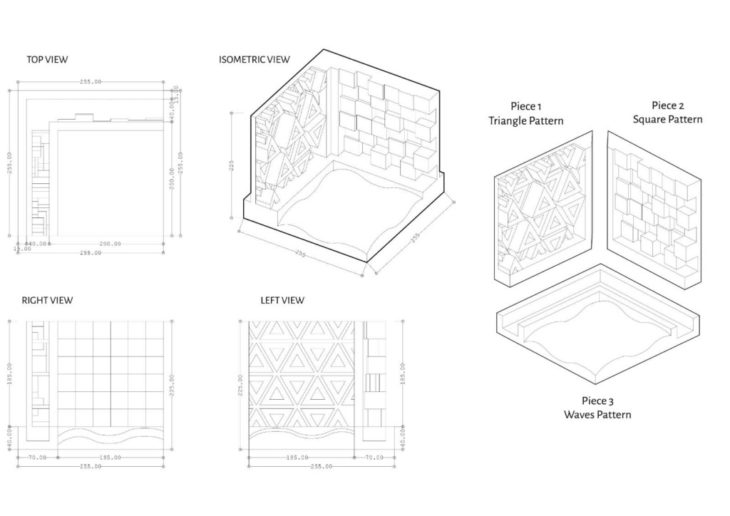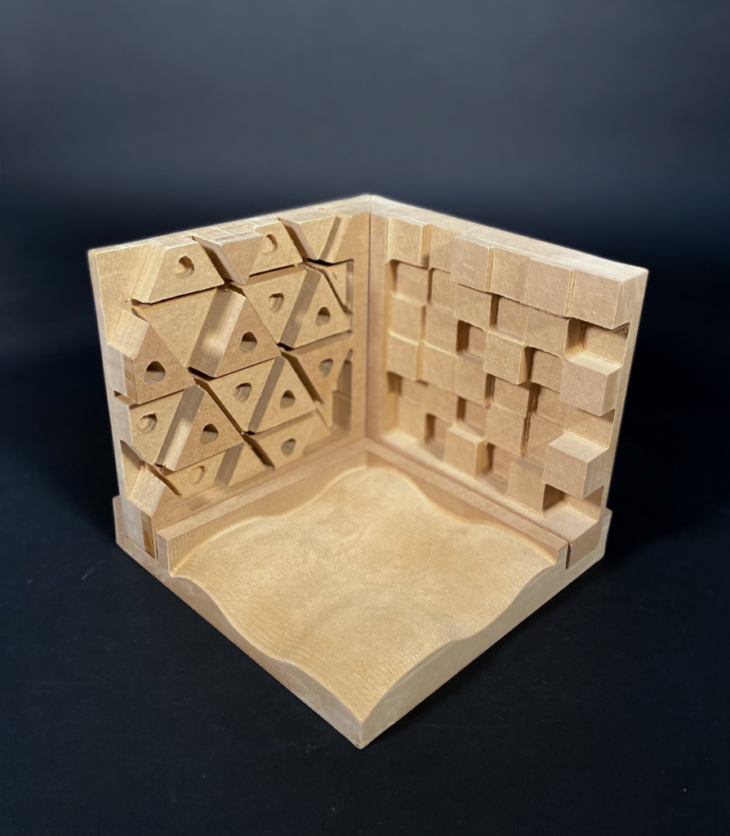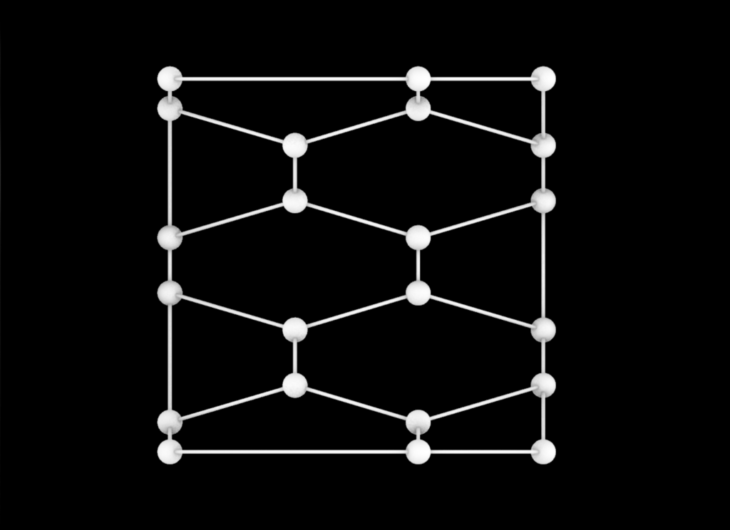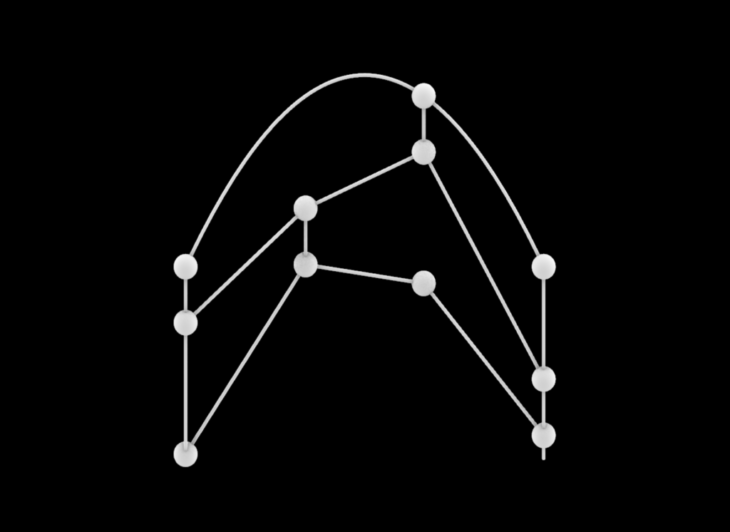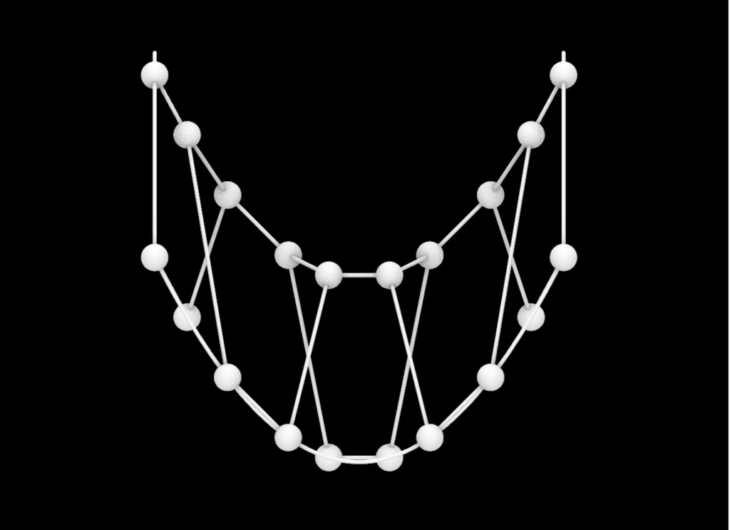INTRODUCTION
Introduction to Digital Fabrication course is focused on learning the use of three different machines: CNC Milling, Laser Cutting and 3D Printing. The objective was to fabricate different recursive geometries with the help of the machines. We focused not only in the geometrical design but fabricated a functional piece based on the characteristics of each machine.
CNC MILLING
Our objective was to create a model with basic geometrical shapes to be able to use as much machine operations as possible.
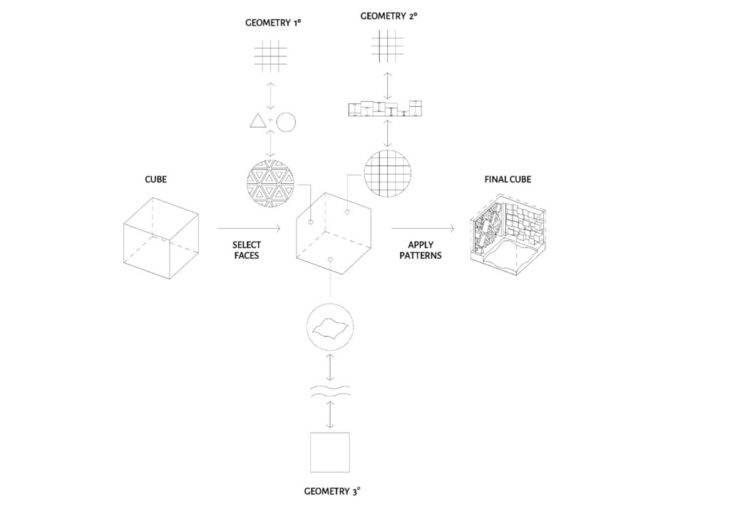
Strategies
Horizontal Roughing
Flat Mill 6mm
Flute: 2
Diameter: 10
Spindle Speed: 12000
Cut Direction: Upcut
Stepdown Control (dZ): 50%
Stepover Distance: 75%
Total mill time: 26 minutes
Horizontal Finishing
Ball Mill 6mm
Diameter: 6mm
Spindle Speed: 12000
Cut Direction: Upcut
Stepover Control: –
Total mill time: 5 minutes
Parallel Finishing
Ball Mill 6mm
Diameter: 6mm
Spindle Speed: 12000
Cut Direction: Upcut
Stepover Control: –
Total mill time: 13 minutes
Pocketing
Flat Mill 10mm
Flute: 2
Diameter: 10 mm
Spindle Speed: 12000
Cut Direction: Upcut
Cut Depth Control: 5%
Stepover Distance: –
Total mill time: 4 minutes
Profiling
Flat Mill 10mm
Flute: 2
Diameter: 10 mm
Spindle Speed: 12000
Cut Direction: Upcut
Cut Depth Control: 5%
Stepover Distance: –
Total mill time: 13 minutes
Clear Flat Tops
Flat Mill 10mm
Flute: 2
Diameter: 10 mm
Spindle Speed: 12000
Cut Direction: Upcut
Cut Depth Control: 5%
Stepover Distance: –
Total mill time: 18 minutes
LASER CUTTING
By using a basic geometric structure of squares and hexagons, we created a piece with the multiple configurations. Each piece has a different work in the structure.
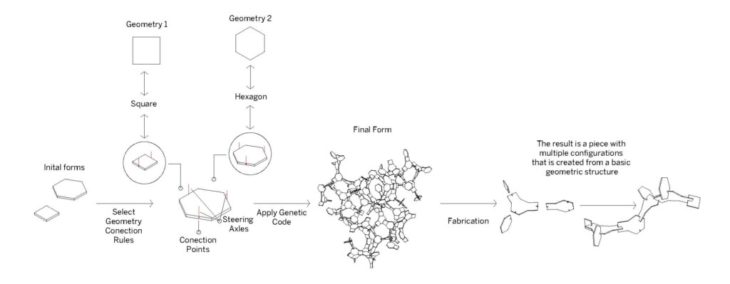

Strategies
Material: Polypropylane 1.2mm
Black Speed 3.5 | Power 48 White Speed 3.5 | Power 60
Duration:
Black 12 minutes White 12 minutes
Technique: Interlocking
Tolerance: 0.8mm
Joint Type: Halved
Machine: RayJet 500
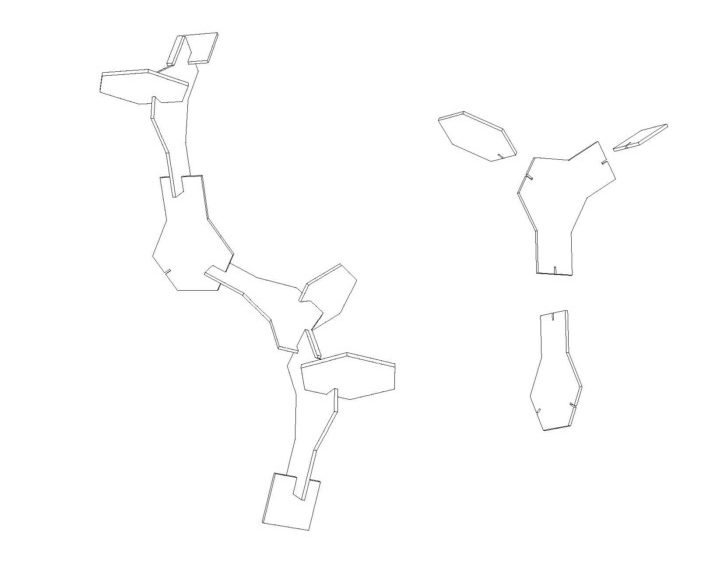
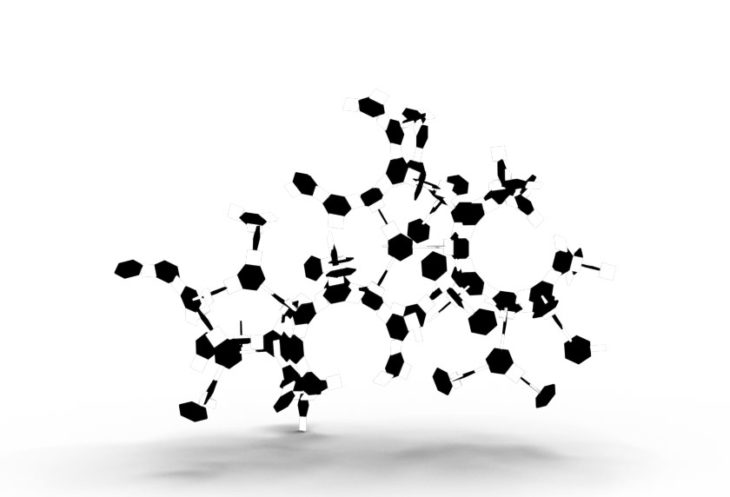
3D PRINTING
The objective was to design 3D printed nodes to join wire rods and create a geometrical piece. All the nodes have the same diameter but each one has unique holes.
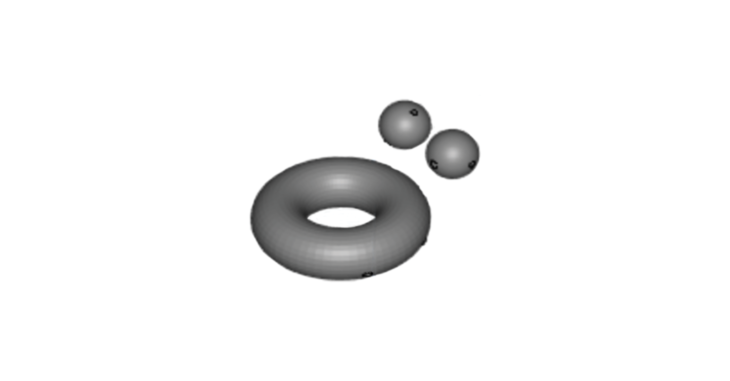
Strategies
Number of Nodes: 20
Printing Time: 4 hours
Tolerance: 2.3 mm
Printer: Zortrax 200M
Material: Z-ABS
Supports: None
Infill Density: 0
Layer Thickness: 0.19
Print Quality: High
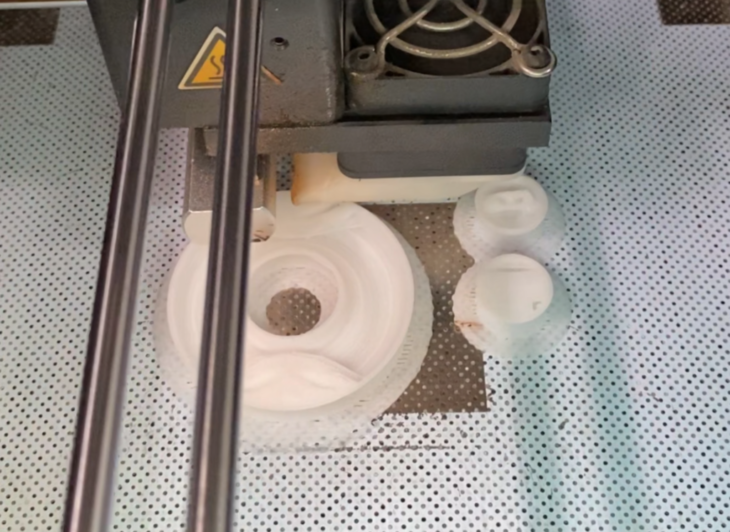
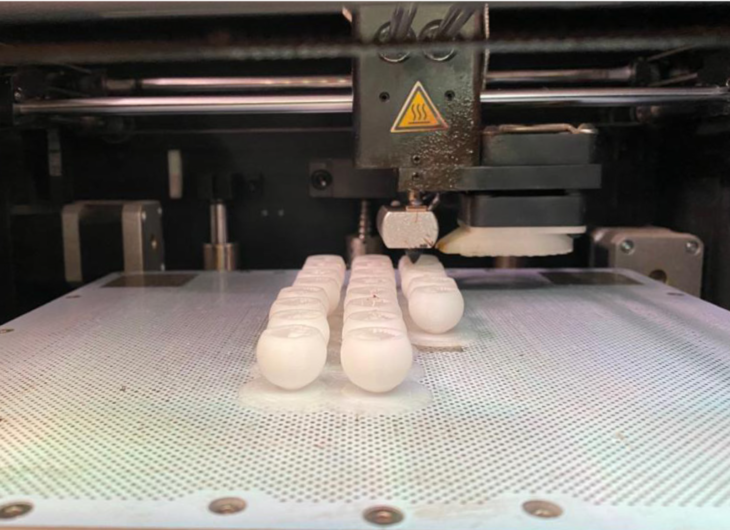
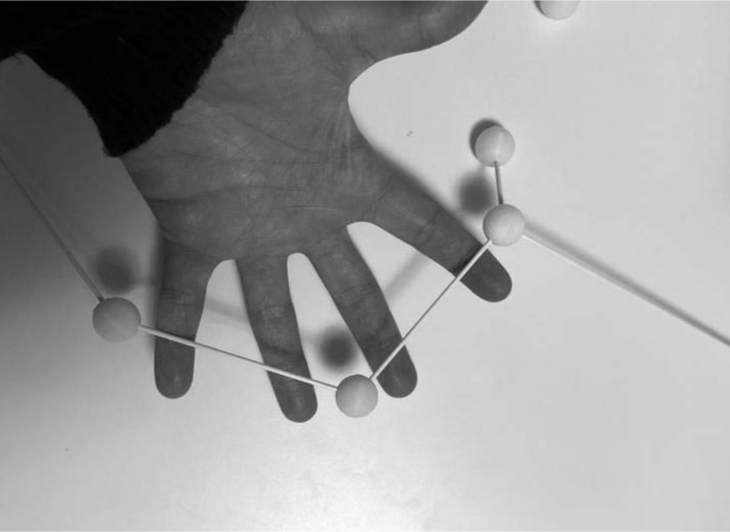
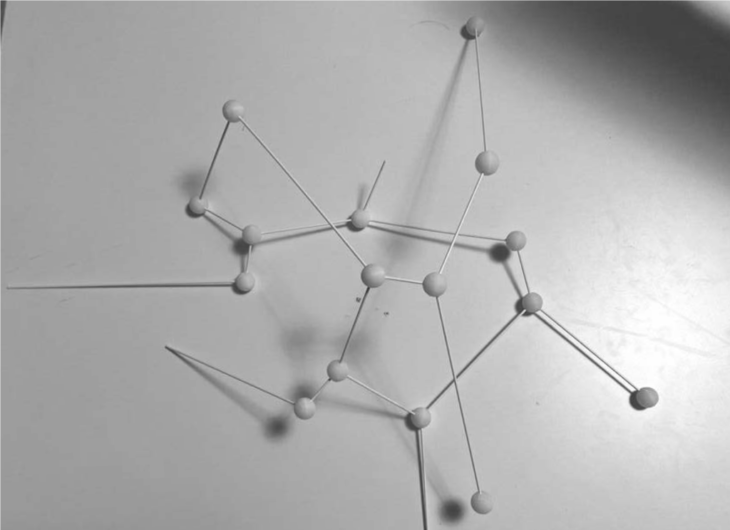
Introduction to Digital Fabrication – Recursive Geometries is a project of IAAC, Institute for Advanced Architecture of Catalonia developed at Master in Advanced Architecture in 2021 by Students: Arunima Kalra, Brian Woodtli and José Manuel Asensio and faculty: Shyam Francesco Zonca, Lana Awad and Ricardo Mayor
